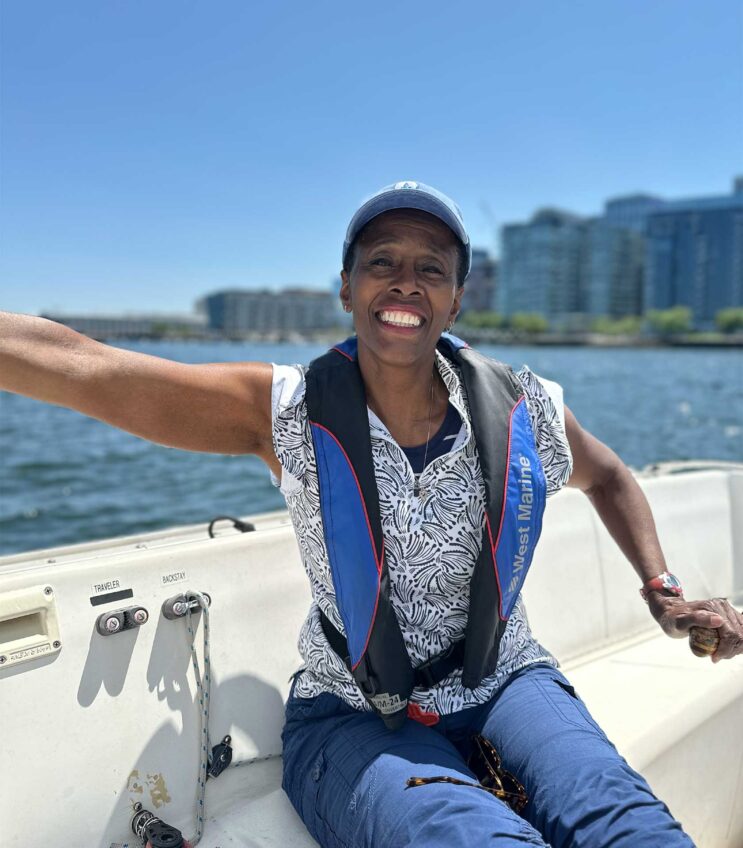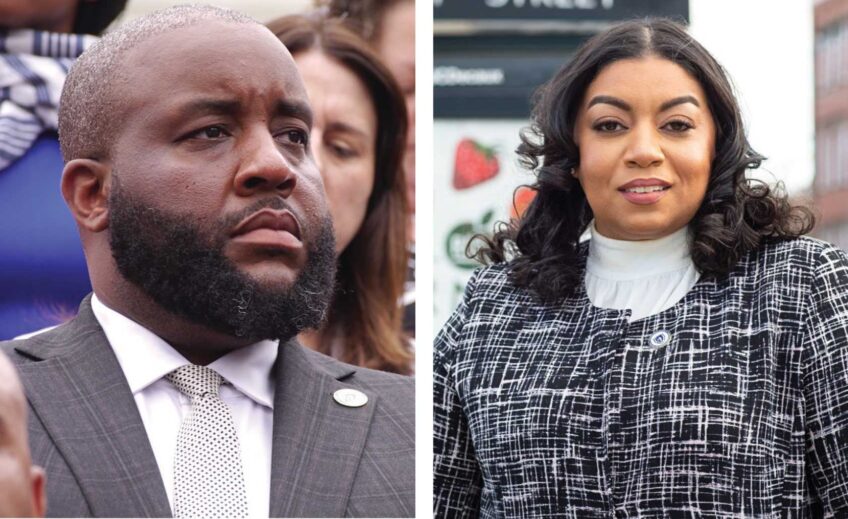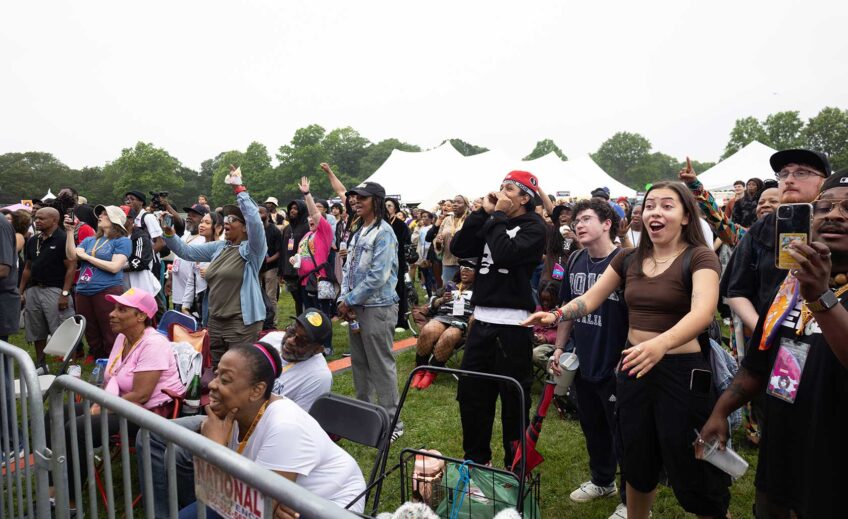Surrounded by mystery books at the Egleston Square Branch Library in Roxbury, fashion designer Imani McFarlane stimulates her audience’s imagination.
She folds, twists and drapes green patterned fabric around Benahla Earth’s head. In less than a minute, the simple piece of rectangular cloth becomes an African head wrap built around the model’s contained locks.
“They give you such a regal and such a dignified appearance. They have an amazing way to transform you,” says Imani, who holds workshops like the recent Egleston Square session to promote her products, popularize the art of African head wrapping and teach people how to adorn themselves.
“[The wraps] uplift your spirit, boost your self-esteem and also they enhance your beauty,” she says.
During the workshop, Imani handles square, triangular and rectangular pieces of cloth to show the different kinds of head wraps people can create. She also presents pre-made head wraps, which are easier to drape.
“You cannot wrap a bad wrap,” she says, meaning that people should be creative and trust their imagination to style their head wraps in different ways.
There is only one rule: “When you create a head wrap, you have to keep in mind the end result. Certain shapes create certain styles,” she notes.
According to Imani, head wraps are popular in many parts of the world. They indicate the wearer’s social status, reveal spiritual choices and complement fashion styles. Men also use head wraps in some regions, she said, mainly in religious rituals and public dances.
“Head wraps are used to make political statements, and they are also used to conceal medicine,” she adds.
She is referring to the use of head wraps as an alternative for people who are losing their hair due to illness or medical treatment, which has become an important part of Imani’s work.
Nowadays, she holds workshops not only in libraries and auditoriums, but also at hospitals. She also gives talks for the “Look Good … Feel Better” program, administered by the American Cancer Society.
“Head wraps are a great alternative to itchy and uncomfortable wigs,” says Imani while draping a head wrap on another female audience member. During the workshop, Imani makes sure to show that the wraps will fit both those with little to no hair and those with plenty of it by inviting several women from the audience to take part.
“It’s beautiful. And with my hair growing, I needed to do other things with it. I thought this would be a fantastic way to cover my hair and also get back to my roots,” says Benahla Earth, adorned with her green head wrap.
The complex meaning that head wraps have acquired through time has fascinated Imani since she was a child.
Born in Jamaica, she first fell in love with the decorative head wraps worn at spiritual ceremonies on the island. Later, she discovered Rastafarian head wraps and became especially fond of the styles worn by Bob Marley and his post-Wailers backing band, the I Threes.
As a teenager, Imani began wearing head wraps herself. When she moved with her family to Boston in 1972, she started designing head wraps and clothing, eventually producing her first collection in 1980, when she was 18.
While studying fashion at The Elma Lewis School of Fine Arts and later at Fisher College, she discovered the work of European designers like Coco Chanel. The discovery led her to start using European silks and chiffons in her collection of head wraps, in addition to patterned cottons from Nigeria, Ghana and the Congo.
People can enjoy a great variety of head wraps’ colors and shapes, which can be styled quickly and easily, says Imani.
“And we create elaborate head wraps with minimum fabric,” she says. To eliminate some of the familiar hassles of head wrapping, Imani also got rid of pins and clips, making the wraps safer, more comfortable and easier to drape.
The styles and subtle upgrades are a big hit at the Egleston Square workshop.
“I love it,” says Merlene Moir after seeing herself in a small mirror she carried in her purse. She wears a head wrap Imani styled for her in an African cloth adorned with cowry shells on the forehead.
“It gives you a sense of belonging … These are the things that some of our ancestors would do. I have always been fascinated with [them],” says Moir.
Moir says that whenever she wears a head wrap or an African costume at work, doctors make positive remarks. One of them, she recalls, even said he felt like bowing to her because of the head wrap.
Excited about her new wrap, Moir decides to sleep in it. She wants to go to work with it, still draped by Imani.
“I gotta go to work so my doctors could bow at me,” she jokes.






